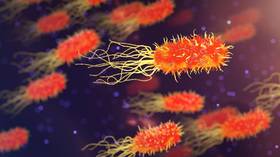There are many ways of practising the healing art; but there is only one way that Heaven approves. God’s remedies are the simple agencies of nature, that will not tax or debilitate the system through their powerful properties. Pure air and water, cleanliness, a proper diet, purity of life, and a firm trust in God are remedies for the want of which thousands are dying; yet these remedies are going out of date because their skilful use requires work that the people do not appreciate. Fresh air, exercise, pure water, and clean, sweet premises are within the reach of all with but little expense.—Testimonies for the Church 5:443.

The study, led by professor Tony Maxwell, investigated quinolone antibiotics, which are used to fight numerous bacterial infections up to and including TB (tuberculosis).
Quinolones work by inhibiting certain enzymes in bacteria which prevent them from replicating their DNA and synthesising RNA, stopping them dead in their tracks, hence their widespread use in modern medicine.
One resistance mechanism, called pentapeptide repeat proteins (PRPs), can confer quinolone resistance to Mycobacterium tuberculosis, the bacterial mastermind behind TB. But therein lies the problem, as bacterial resistance to this and other leading treatments grows worldwide, there is a gap in the medicinal arsenal for treating many particularly nasty infections.
John Innes Centre researchers, led by Maxwell, conducted a deep-dive investigation into these PRPs at a molecular level, to gain a better understanding of what they were up against and how they might be able to neutralise it.
“We believe this understanding will help drive new ideas for antibiotic development among academics and researchers in the pharma industry,” Maxwell said. They took a purified form of a similar bacterium, mycobacterium smegmatis, and found that a PRP called MfpA can disrupt a DNA process which is essential for quinolone to effectively target the right enzyme in the bacteria, thus shielding the bacteria from the antibiotic airstrike, so to speak.
Further research will develop molecular models based on MfpA’s structure to create small molecules with similar functionality, with a view to preventing collusion between MfpA and the bacteria and allow next-generation antibiotics to destroy their targets.